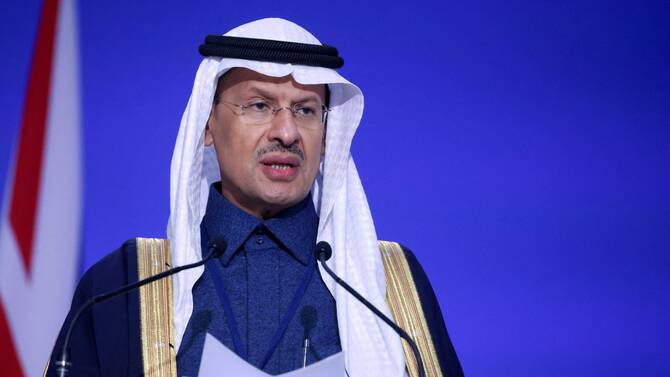NEW YORK: Nike Inc, the world’s No. 1 footwear maker, will continue to dominate the sportswear market despite intensifying competition in North America, analysts said, a day after the company reported “futures orders” below estimates.
Nike’s futures ordering program allows retailers to order five or six months in advance of delivery, with the commitment delivery will be made within a set time at a fixed price.
Nike said on Tuesday its global orders for September through January were up 7 percent on a constant-currency basis, missing the 8 percent increase analysts had expected.
“Despite the threat from a push by competition and disappointing futures, we view Nike’s scale and dominance as a long-term barrier to entry and maintain our ‘buy’ despite what appears a nascent share loss,” Nomura Securities analyst Simeon Siegel wrote in a client note.
Analysts also noted that Nike’s futures orders for all regions except North America had met or beaten estimates.
Nike shares were set to open about 1.2 percent lower at $54.68 on Wednesday, even though the company’s quarterly revenue and profit beat Wall Street estimates.
The shares fell as much as 5 percent in after-hours trading on Tuesday after the release of the results.
At least eight brokerages cut their price targets on the company’s stock, with FBR Securities reducing the most, by $8 to $55. The median price target is $63.
Nike’s rivals are chipping away at its decades-long dominant position in sports shoes — Under Armor Inc. with its popular Stephen Curry line of basketball shoes and Adidas with retro sneakers such as the Stan Smith line.
Germany-based Adidas has also been spending more on marketing in North America.
Nike said it would no longer provide information on futures orders in its quarterly earnings releases, but would discuss them during its earnings conference calls.
That decision was “very suspect,” Edward Jones analyst Brian Yarbrough told Reuters on Tuesday.
Analysts at Credit Suisse also expressed concern.
“We are becoming increasingly concerned that the quality of results is deteriorating, as top-line trends in key markets look shaky, gross margin pressure is persistent, and the company is reducing disclosure,” Credit Suisse analysts wrote in a note.
The brokerage cut its price target to $60 from $63.
However, Nomura’s Siegel played down the change in futures reporting.
“Sales guidance has been a better approximator of actual sales growth vs. futures in all but two quarters since 1Q15 and we therefore fully understand management’s decision to dilute the importance of the metric,” he said, cutting his price target to $60 from $64.
Nike on track for long-run growth
Nike on track for long-run growth

The Family Office to host global investment summit in Saudi Arabia

RIYADH: The Family Office, one of the Gulf’s leading wealth management firms, will host its exclusive investment summit, “Investing Is a Sea,” from Jan. 29 to 31 on Shura Island along Saudi Arabia’s Red Sea coast.
The event comes as part of the Kingdom’s broader Vision 2030 initiative, reflecting efforts to position Saudi Arabia as a global hub for investment dialogue and strategic economic development.
The summit is designed to offer participants an immersive environment for exploring global investment trends and assessing emerging opportunities and challenges in a rapidly changing financial landscape.
Discussions will cover key themes including shifts in the global economy, the role of private markets in portfolio management, long-term investment strategies, and the transformative impact of artificial intelligence and advanced technologies on investment decision-making and risk management, according to a press release issued on Sunday.
Abdulmohsin Al-Omran, founder and CEO of The Family Office, will deliver the opening remarks, with keynote addresses from Saudi Energy Minister Prince Abdulaziz bin Salman and Prince Turki Al-Faisal, chairman of the King Faisal Center for Research and Islamic Studies.
The press release said the event reflects the firm’s commitment to institutional discipline, selective investment strategies, and long-term planning that anticipates economic cycles.
The summit will bring together prominent international and regional figures, including former UK Treasury Commercial Secretary Lord Jim O’Neill, Mohamed El-Erian, chairman of Gramercy Fund Management, Abdulrahman Al-Rashed, chairman of the editorial board at Al Arabiya, Lebanese Minister of Economy and Trade Dr. Amer Bisat, economist Nouriel Roubini of NYU Stern School of Business, Naim Yazbeck, president of Microsoft Middle East and Africa, John Pagano, CEO of Red Sea Global, Dr. Anne-Marie Imafidon, MBE, co-founder of Stemettes, SRMG CEO Jomana R. Alrashed and other leaders in finance, technology, and investment.
With offices in Bahrain, Dubai, Riyadh, and Kuwait, and through its Zurich-based sister company Petiole Asset Management AG with a presence in New York and Hong Kong, The Family Office has established a reputation for combining institutional rigor with innovative, long-term investment strategies.
The “Investing Is a Sea” summit underscores Saudi Arabia’s growing role as a global center for financial dialogue and strategic investment, reinforcing the Kingdom’s Vision 2030 objective of fostering economic diversification and sustainable development.









